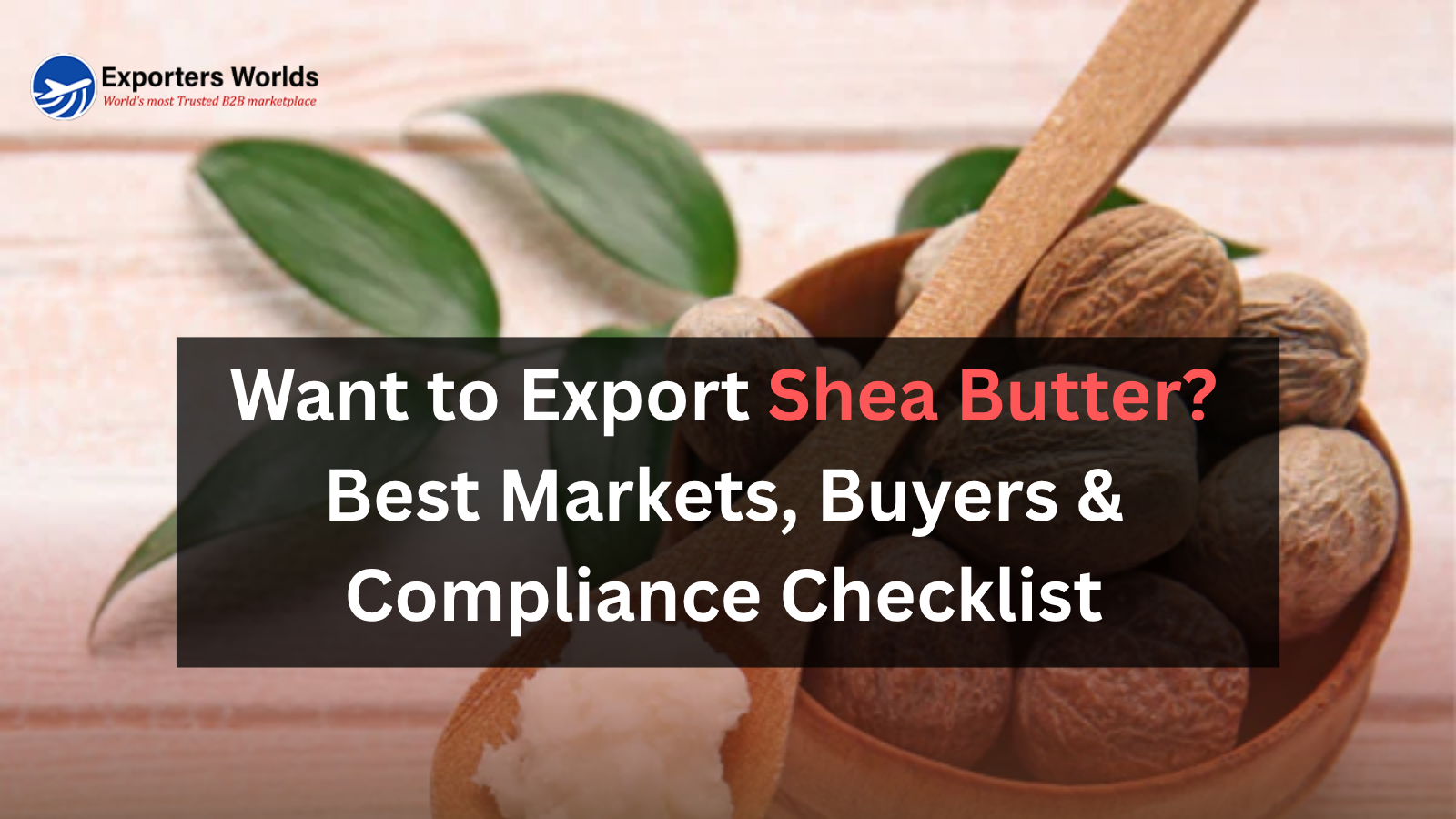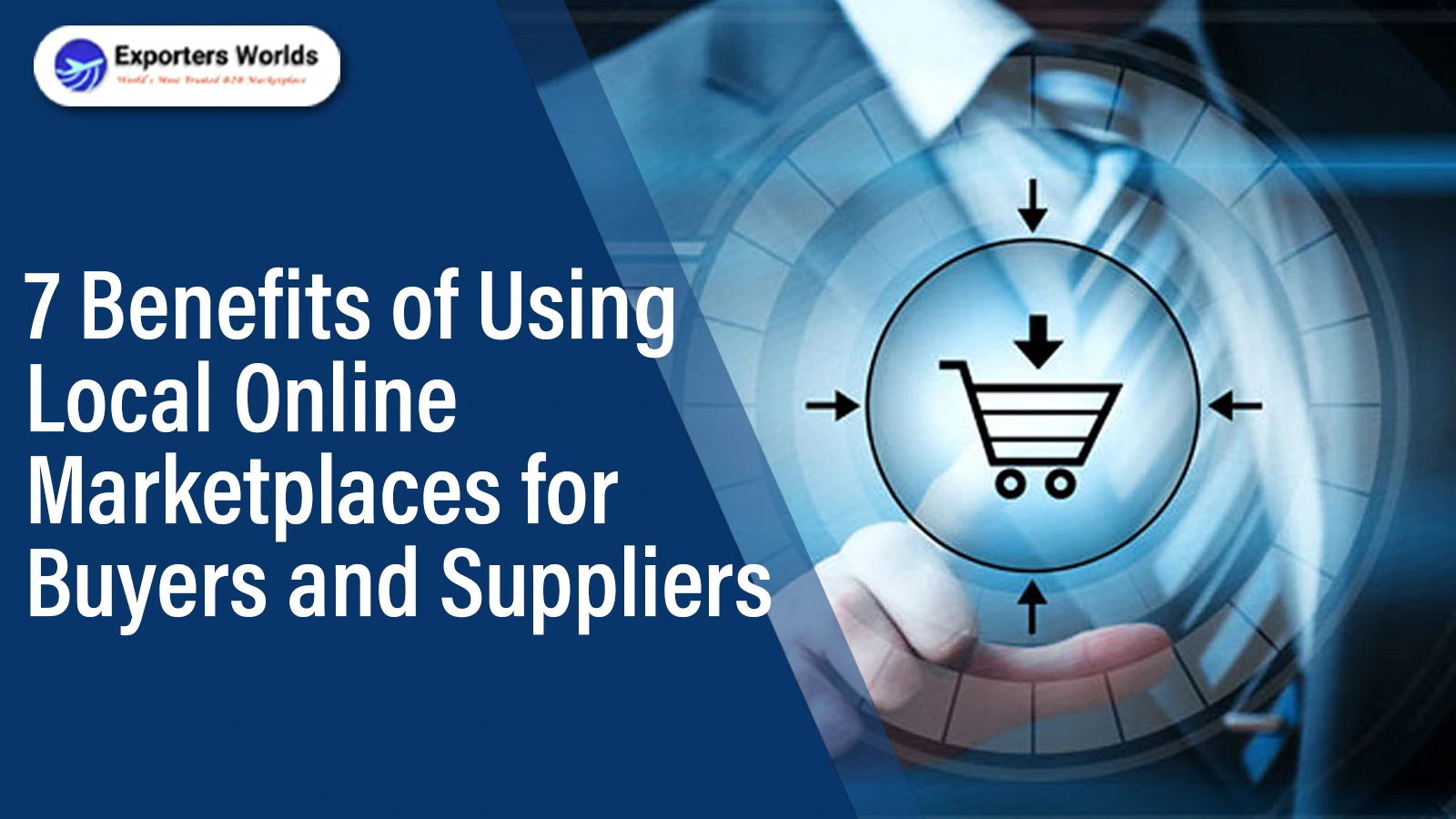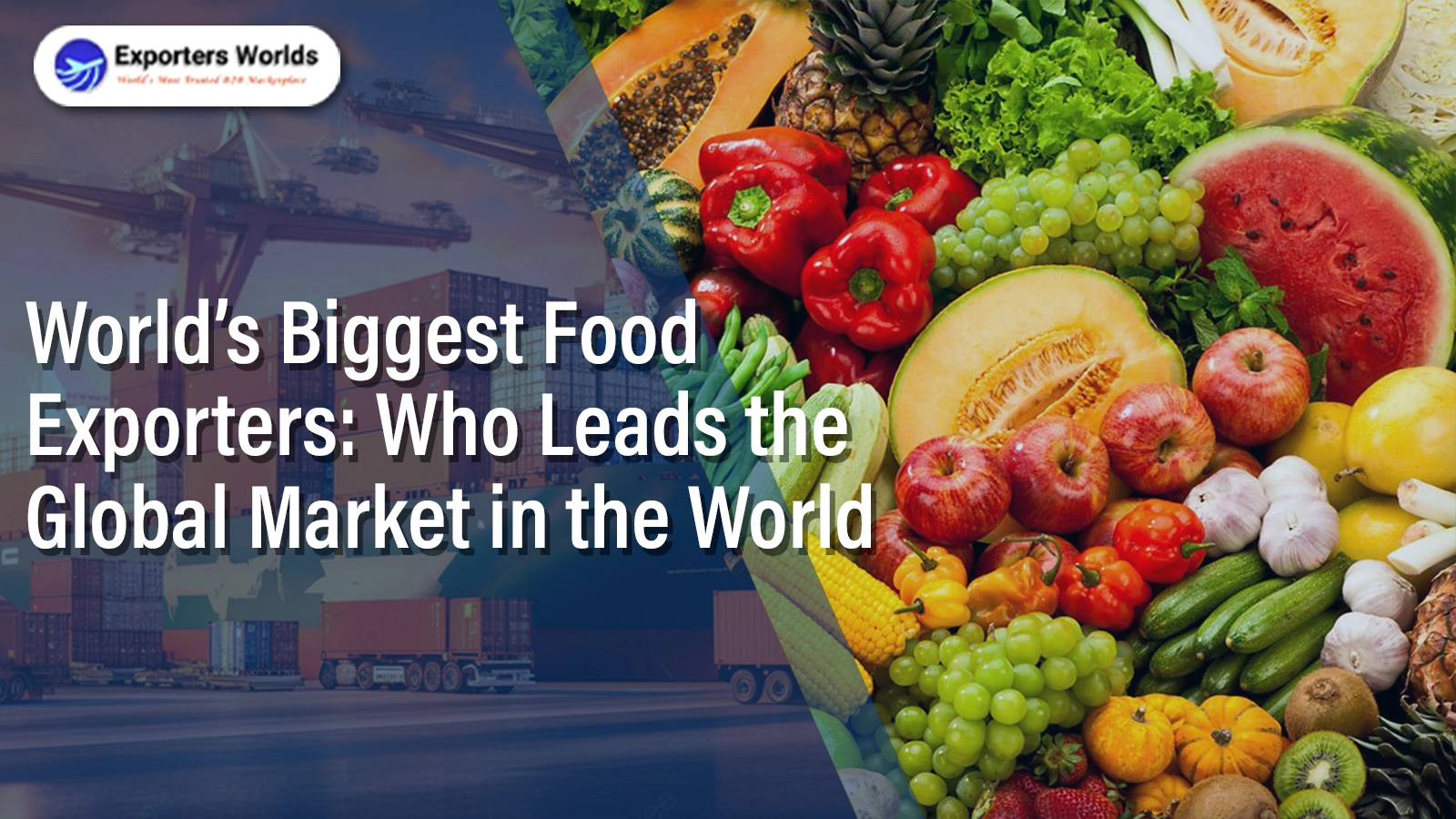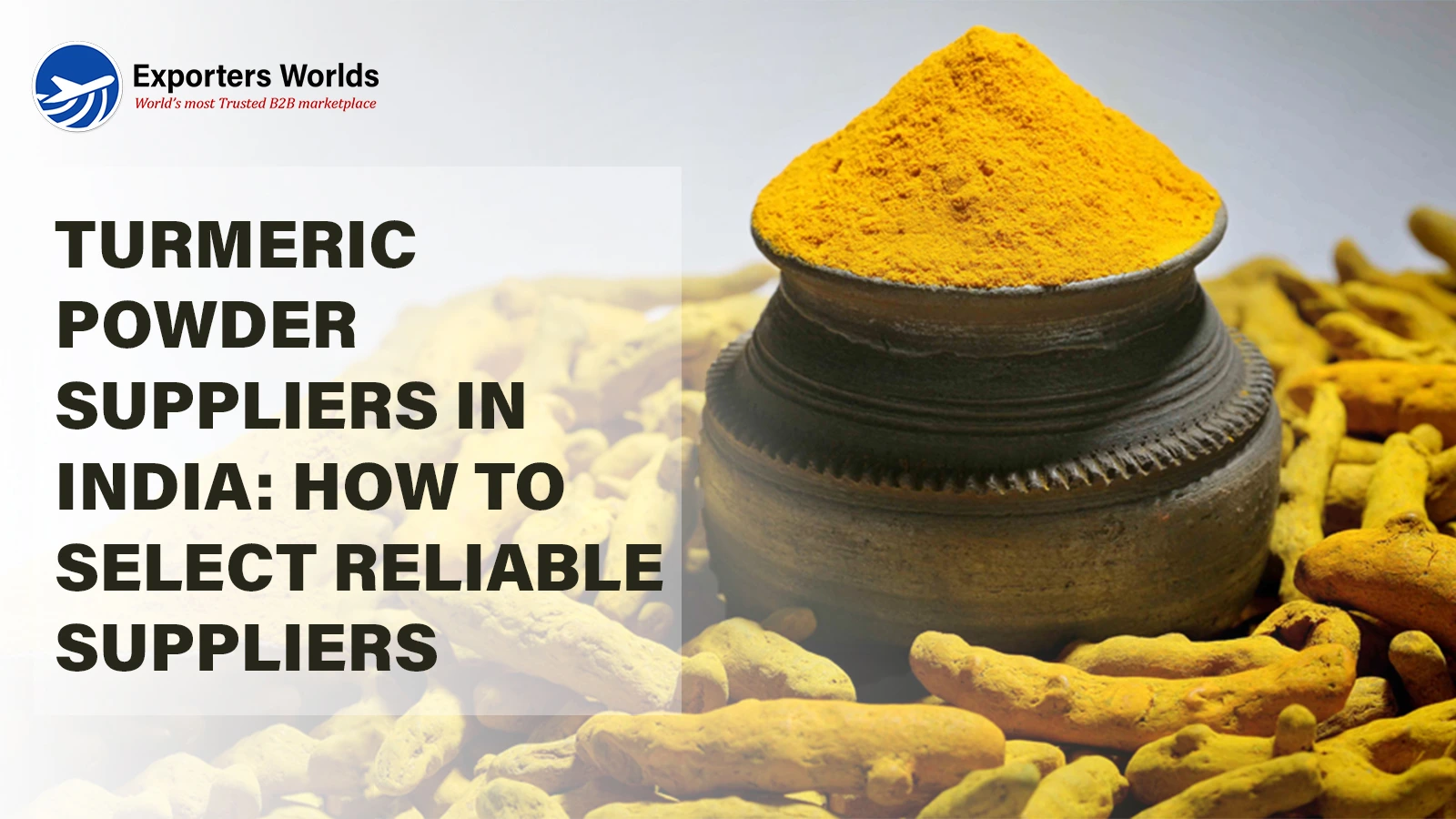Want to Export Shea Butter? Best Markets, Buyers & Compliance Checklist

Let’s not overcomplicate things. Shea butter export is big. Not because it’s trendy, but because it fits right into what the world is chasing—clean beauty, sustainable living, natural healing. All that.
You’re sitting on something valuable. And the global market knows it. Shea butter is showing up in everything from premium skincare lines in Tokyo to vegan chocolates in Germany. It’s no longer just “that African butter.” It’s an international commodity with real profit potential.
So, if you're figuring out how to export shea butter, this isn’t just a how-to article. It’s a strategic map. We’ll talk about markets that are actually buying, what those buyers look like, what paperwork can stall you, and how platforms like Exporters Worlds can take your butter from warehouse to worldwide. Let’s go.
I. Why Export Shea Butter?
The numbers speak first. In 2023, the global shea butter market was already hovering around $2.2 billion. That’s not counting the underground channels or small, undocumented trades. Now project that to $3.5 billion by 2028, and you start seeing how serious this is.
But it’s not just the money—it’s the mindset shift.
Today’s consumer doesn’t want “processed.” They want natural, ethical, transparent. If your shea butter is unrefined, fair trade, and doesn’t scream “chemical lab,” you’re on the radar.
And yes, there’s a gap between local and export pricing. Massive gap. A 1-ton shipment that might fetch you $1,800 at home could hit $4,200–$4,800 internationally—especially if you’re certified or working with a buyer who understands your value.
Three things push the export needle hard:
-
The sustainability narrative: Shea harvesting supports thousands of women-led cooperatives.
-
The traceability pressure: Buyers want to know which village tree that butter came from.
-
And the labeling war: Clean-label sells. And shea butter wears that badge effortlessly.
And if you're serious? Platforms like Exporters Worlds help you get there faster—no fluff. Just buyers, tools, exposure.
II. Top Export Markets for Shea Butter
A. United States
The U.S. isn’t just a “big buyer.” It’s a brand-hungry market that absorbs natural ingredients like a sponge. Organic skincare? Shea. Beard balms? Shea. Stretch mark creams for new moms? You guessed it.
But there’s a gatekeeper: the FDA.
Even if you’re selling it as a “cosmetic base,” labeling and safety standards will matter. Include the INCI name (Butyrospermum Parkii), outline shelf life, and—never skip this—comply with Good Manufacturing Practices (GMP).
Most importantly: buyers in the U.S. don’t play around. They’ll ask you for test reports, sustainability proof, and even third-party audits.
Want to get in front of them? Exporters Worlds is where many U.S. indie brands and bulk buyers are already searching for certified exporters—especially in fair trade, raw, and organic shea categories.
B. European Union
Europe is picky—but loyal. Give them what they need once, and they come back with larger orders.
Over 60% of exported African shea butter goes into Europe, and most of it ends up in high-end beauty or organic chocolate. But here’s the catch:
They don’t just want shea. They want stories, certification, traceability, EU Organic, COSMOS, and REACH compliance—especially if it’s hitting skin.
REACH isn't just paperwork. It’s proof that your product won’t cause allergic reactions or chemical interactions. You’ll also want strong packaging standards and possibly documentation about pesticide-free sourcing.
The ones buying? Many of them use Exporters Worlds to source bulk orders from vetted producers—especially exporters who understand how to package both quality and ethics together.
C. Asia (South Korea, Japan, China)
Now here’s a beast that’s growing fast. Asian markets—particularly South Korea and Japan—have exploded in beauty and wellness demand. China’s playing catch-up in volume but making bold moves.
They love shea butter, but let’s be real—they care about aesthetics.
Branding matters.
Color matters.
Texture, smell, finish... it all plays into perception.
Buyers here look for refined or filtered shea butter—low odor, snow-white, and retail-presentable. The market is clean, crisp, and precise. You can’t wing it here.
But if you do it right? That 100 kg batch could become a long-term export contract with a spa chain in Seoul or an e-commerce beauty house in Beijing. Want to understand what works in Asia? Exporters Worlds helps bridge language and market nuances—buyers are vetted, and trends are analyzed.
D. Middle East
There’s strong demand here, especially for bulk raw and semi-processed shea butter. The region, particularly the UAE and Saudi Arabia, imports for their flourishing local cosmetics and soap production industries.
These aren’t fancy beauty brands. They’re manufacturers who want volume. Think 5-ton shipments and rapid turnaround.
They’ll ask for basic documentation, but they’re less certification-driven—price and quality speak louder here.
Many of these buyers source directly through B2B platforms like Exporters Worlds, which has strong visibility in Middle Eastern regions due to curated exporter showcases and logistics integration.
E. Africa (Intra-continental Trade)
Here’s something we don’t talk about enough: Africa is rising as a buyer, not just a source.
With AfCFTA, regional duties are dropping, and trade across borders is smoother than ever. Startups in South Africa, Rwanda, Kenya, and Nigeria are formulating their own skincare lines—and they’re sourcing shea butter from West Africa.
If you’re an exporter in Ghana, Burkina Faso, or Benin, you’re now within reach of 1.3 billion consumers, legally backed by zero tariffs under the right conditions.
And again, Exporters Worlds has helped dozens of exporters list, connect, and trade regionally without needing massive distribution networks.
III. Who’s Buying? Key Buyer Segments
A. Cosmetic Companies
Obvious? Maybe. But also the most loyal when trust is earned.
Large brands, mid-size naturals, and indie skincare labs—they all want certified, traceable shea. Not just the butter, but the impact story behind it.
If you’re Fair Trade or women-owned, highlight it. It’s a differentiator.
Exporters Worlds’ beauty sector listing helps you showcase your certifications, origin traceability, and even upload lab tests and documentation.
B. Pharmaceutical & Nutraceutical Companies
They buy refined or filtered shea butter—less color, more purity. Think healing balms, eczema treatments, or joint supplements. This market is smaller but pays better for consistent, lab-tested supply.
C. Food Processors
Yes, this is real. Some of the biggest chocolate brands use shea butter as a CBE (Cocoa Butter Equivalent).
To play here, you need:
-
Food-grade certification
-
Possibly HACCP or ISO 22000
-
Packaging that avoids cross-contamination
D. Bulk Distributors & Wholesalers
They don’t need the fluff. They need metric tons of butter at the right price.
Many wholesale buyers search Exporters Worlds specifically for bulk-ready, high-volume, transparent pricing listings—often closing deals directly on-platform.
E. Private Label Brands & Indie Startups
Their orders are small—maybe 25 kg. But they pay a premium. What they care about is sourcing story, community impact, and how well your shea butter matches their brand’s voice.
These are the future L’Occitanes and Shea Moistures. Treat them with care. They talk. They refer. They grow.
IV. Compliance Checklist for Shea Butter Export
A. Product Standards
-
Define your product: Unrefined? Refined? Deodorized?
-
Certifications that matter: USDA Organic, EU Organic, Fair Trade, COSMOS
-
Common spec requirements: Free Fatty Acid %, Moisture Content, Peroxide Value
B. Documentation Required
-
Certificate of Origin
-
Export License
-
Phytosanitary Certificate (when applicable)
-
MSDS/SDS (Material Safety Data Sheet)
C. Packaging & Labeling
-
Use the INCI name, not “African butter”
-
Batch number, production date, shelf life—all mandatory
-
Avoid see-through packaging if shipping in hot weather
D. Customs & Regulatory
-
FDA for U.S. cosmetics and food
-
REACH for EU cosmetic entry
-
Always check local laws if targeting Asia or Middle East—there’s no universal template
E. Logistics & Shipping
-
Butter melts—don’t gamble. Use insulated packaging or ship in cooler months.
-
Freight forwarders who understand agri-beauty exports are key
-
Set clear Incoterms with your buyer (EXW, FOB, CIF—depends on contract size)
V. Tips for First-Time Shea Butter Exporters
Start with what you can guarantee in quality—not just volume.
Test the waters. Ship small, clean, documented batches. Build relationships. Follow up like your business depends on it—because it does.
Use Exporters Worlds not as a listing board—but as a buyer engagement platform. Fill your profile. Upload certificates. Reply fast. Trust builds that way.
Apply for export promotion grants or trade finance if you're scaling fast.
VI. Resources & Tools
-
Exporters Worlds – Verified buyer directory, product showcase, export documentation support
-
ITC & UNCTAD – Country-wise export regulations
-
Alibaba / TradeKey – Supplemental visibility (though not always vetted buyers)
-
Chamber of Commerce – For export license and guidance
-
AfCFTA Dashboards – Tariff updates for African trade
VII. Conclusion
The shea butter opportunity isn’t coming—it’s already here.
Across skincare, wellness, and even food, global buyers are searching for ethical, high-quality shea butter exporters—and if you're reading this, you could be one of them.
Compliance is critical. But connection is what really unlocks the door.
Exporters Worlds exists to remove the distance between your product and the right buyer.
From verified leads to compliance support and exposure tools, this is your path to a global shelf presence.
You’ve got the butter. Now go move markets.
VIII. FAQ
Is exporting shea butter profitable?
Absolutely. With certification and quality control, margins can be 2x–3x compared to local sales.
Do I need a license to export shea butter?
Yes. Exporters must obtain an export license, certificate of origin, and in many cases, MSDS/SDS documentation.
How do I find shea butter buyers overseas?
B2B platforms like Exporters Worlds are designed to connect exporters with verified international buyers across industries.
What is the HS Code for shea butter?
The HS Code is 1515.90 – covering other fixed vegetable fats and oils, including shea butter.




